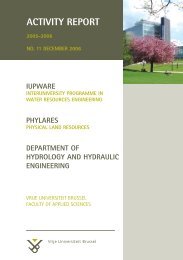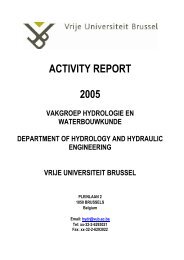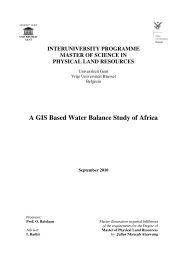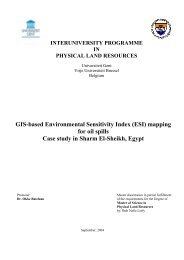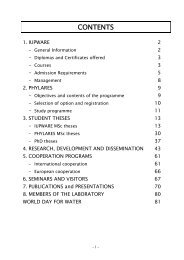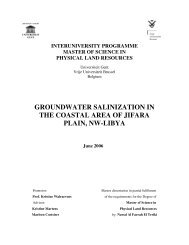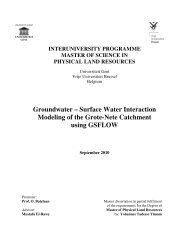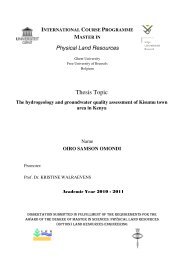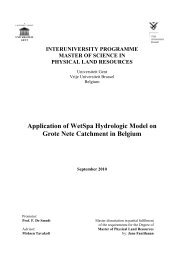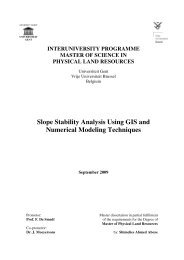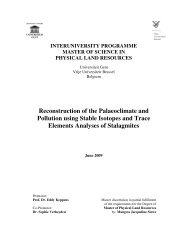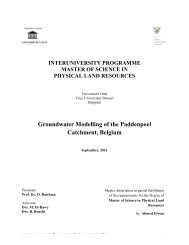Surface Water Interaction Modelling Using Visual MODFLOW and GIS
Surface Water Interaction Modelling Using Visual MODFLOW and GIS
Surface Water Interaction Modelling Using Visual MODFLOW and GIS
- No tags were found...
Create successful ePaper yourself
Turn your PDF publications into a flip-book with our unique Google optimized e-Paper software.
PHYLARES<strong>Interaction</strong> of Groundwater <strong>and</strong> <strong>Surface</strong> water / ch.3__________________________________________________________________________________________11potential energy is also described as the hydraulic head – which is the sum of elevation <strong>and</strong> waterpressure divided by the weight density of water.The geology of an area governs movement <strong>and</strong> availability of surface <strong>and</strong> ground waters. Thepermeability of geologic materials <strong>and</strong> the intensity of precipitation determine the water flowsabove <strong>and</strong> below the l<strong>and</strong> surface. Each geologic material exhibits its own permeability basedupon its chemical <strong>and</strong> structural composition.Much groundwater discharge into surface water is from local flow systems. Local flow systemsare the most dynamic <strong>and</strong> the shallowest flow systems; therefore, they have the greatestinterchange with surface water. Local flow system can be underlain by intermediate <strong>and</strong> regionalflow systems. <strong>Water</strong> in deeper flow systems have longer flow paths, but eventually discharge tosurface water <strong>and</strong> they can have a great effect on the chemistry of the receiving water.After rainfall events, materials with low permeability will cause water to pond whenever thewater input (recharge) exceeds the capacity of the materials to hold the water. Ponding of waterwill then cause water movement across the l<strong>and</strong> surface <strong>and</strong>/or into the subsurface. <strong>Surface</strong>movement of water will follow elevation differences on the l<strong>and</strong> surface, thus water willeventually spill into lakes, streams, rivers, etc. (Figure 3.1)Figure 3.1Flow through a Hypothetical aquifer system (GSFLOW model based on integration ofPRMS <strong>and</strong> <strong>MODFLOW</strong> 2005, Steven.L et.al USGS Techniques <strong>and</strong> methods 6-D1, 2008)______________________________________________________________________________________Groundwater – <strong>Surface</strong> water interaction modeling using visual <strong>MODFLOW</strong> <strong>and</strong> <strong>GIS</strong>




